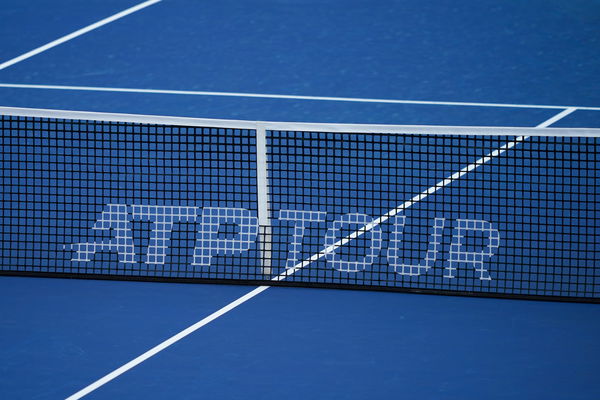
via Getty
A detailed view of an ATP TOUR logo on a tennis net during the semifinal round of the Western & Southern Open at Lindner Family Tennis Center on August 17, 2019 in Mason, Ohio. (Photo by Adam Lacy/Icon Sportswire via Getty Images)

via Getty
A detailed view of an ATP TOUR logo on a tennis net during the semifinal round of the Western & Southern Open at Lindner Family Tennis Center on August 17, 2019 in Mason, Ohio. (Photo by Adam Lacy/Icon Sportswire via Getty Images)
The WTA and ATP Finals are the year-end tournaments that are held every season between that year’s best players on tour. Race to Finals is a list of the players on the basis of points they’ve accumulated in that year, out of which, the top 8 tennis players qualify.
In tennis, rankings are of huge significance as they determine entry to tournaments and seeding, apart from bragging rights, of course. However, the rankings system can understandably be complicated and leave onlookers puzzled. Here’s a detailed explanation of the ATP and WTA rankings and the Race to the Finals events.
ADVERTISEMENT
Article continues below this ad
How do the Race to Finals and Rankings work?
The top-8 performers on the ATP and WTA tours every calendar year qualify for their respective Finals tournaments. Each year, the Race to Finals includes the list of points accumulated by a player from the beginning of that calendar year. The year-end World Number 1 is awarded to the players, from the ATP and WTA tours, which end the year at the number 1 spot.
On the other hand, the ATP or WTA Rankings are a performance system adopted by the Association of Tennis Professionals (ATP) and Women’s Tennis Association (WTA) respectively to determine qualifying for all singles and doubles events, as well as seeding. The number of ranking points provided depends on the stage of the event reached and the tournament’s status, with the four Grand Slam tournaments receiving the most points.

Throughout the season, a player accumulates points by adding their best-qualified results from up to 18 events in the ATP tour and 16 tournaments for the WTA tour.
A champion receives 1000 points for winning the coveted ATP World Tour Masters 1000 title. The 500 and 250-level ATP World Tour events provide 500 and 250 points, respectively. Even if a player does not win the title, they can still gain points based on how far they advance in the draw.
Points distribution is largely similar on the WTA tour with slight modifications. WTA 500 tournaments offer 470 points to the champions, while a WTA 250 event has 280 points for grabs. Official rankings are updated every Monday throughout the season.
Watch this story: The Journey of Roger Federer to the Elite Billionaire’s Club
Difference between Race to Finals and World tennis rankings
The Race to Finals is not identical to the Rankings, which are based on points accumulated in the last 52 weeks. Meanwhile, the Race to Finals only considers the points gathered within a calendar year.
For example, Rafael Nadal can be ranked World No. 5 in the ATP rankings based on his performances on the ATP tour over the last 52 weeks. However, his position may be different on the Race to Finals if he hasn’t performed particularly well in that calendar year.
ADVERTISEMENT
Article continues below this ad

ADVERTISEMENT
Article continues below this ad
Additionally, the rankings are maintained and updated with the aim of determining qualification for tournaments and seeding. However, the Race to Finals is maintained with the qualification to the year-end event in mind.
ADVERTISEMENT
ADVERTISEMENT
ADVERTISEMENT
ADVERTISEMENT

